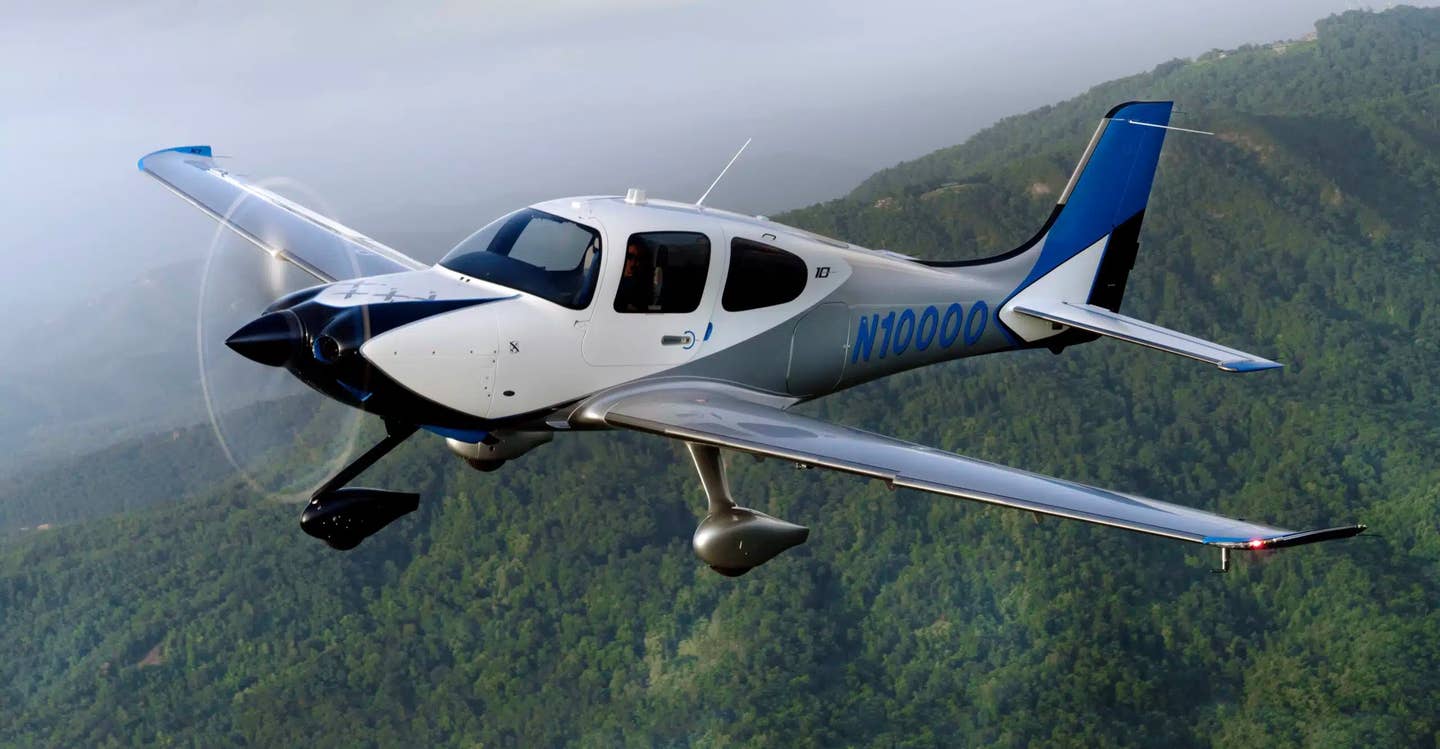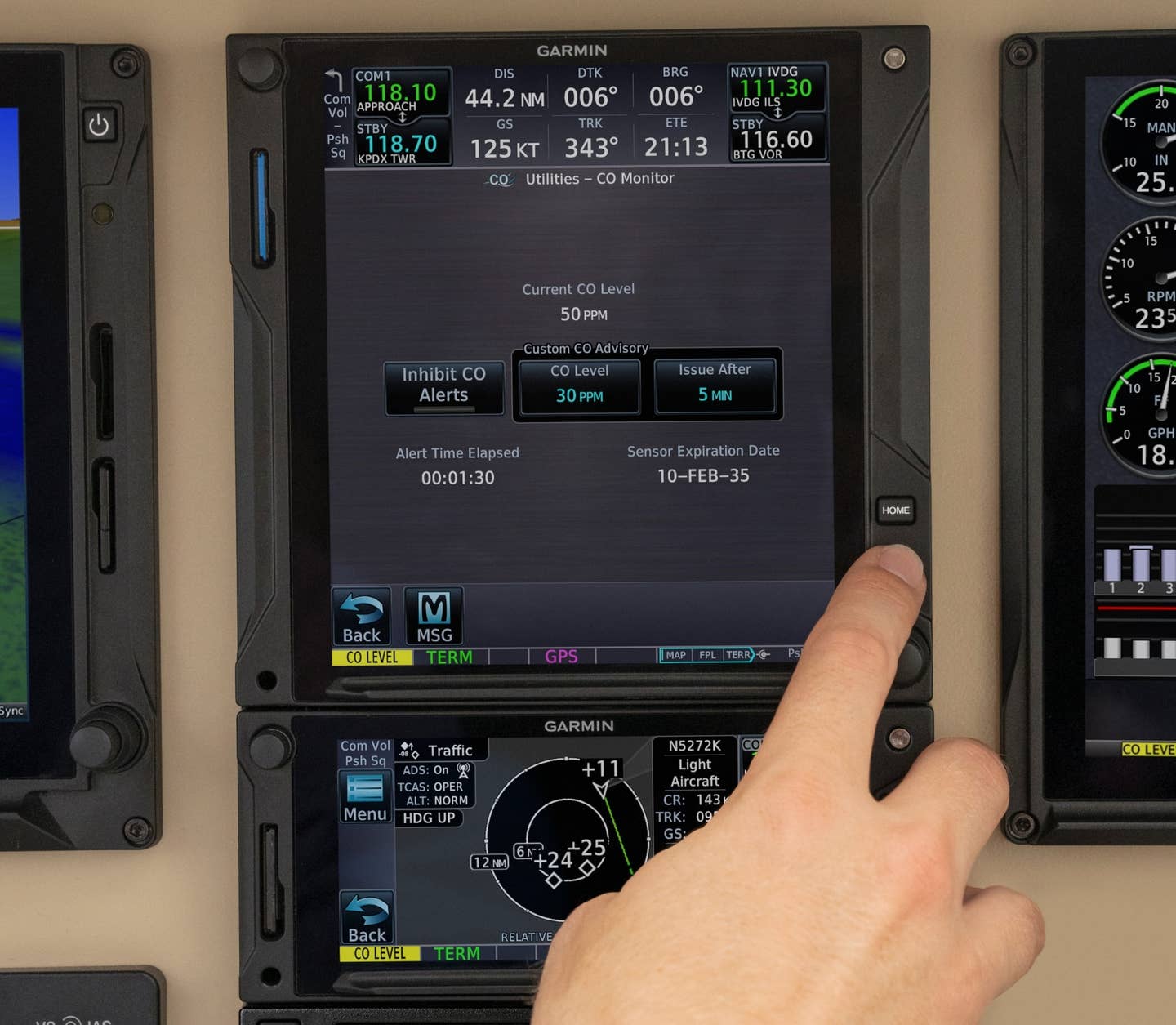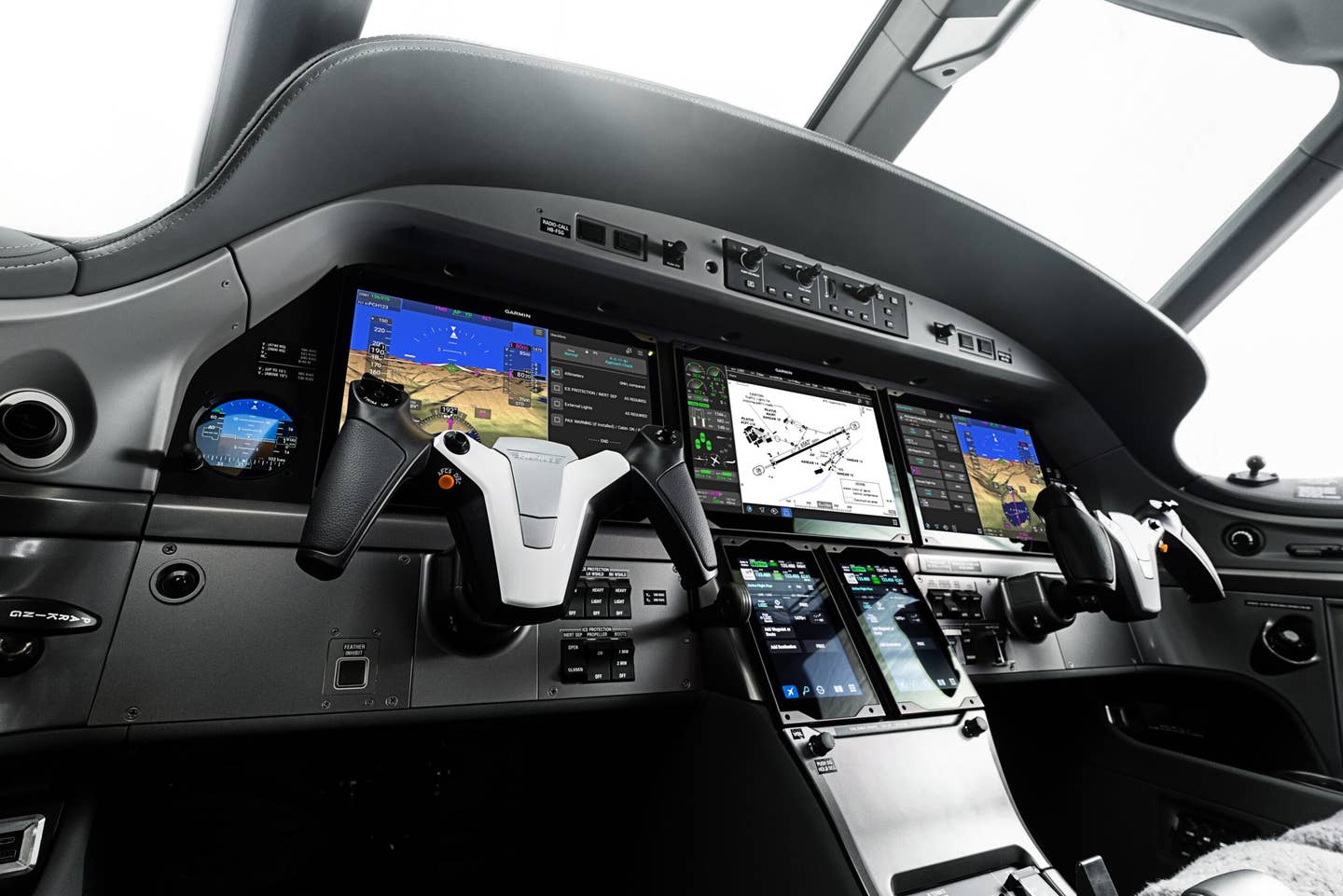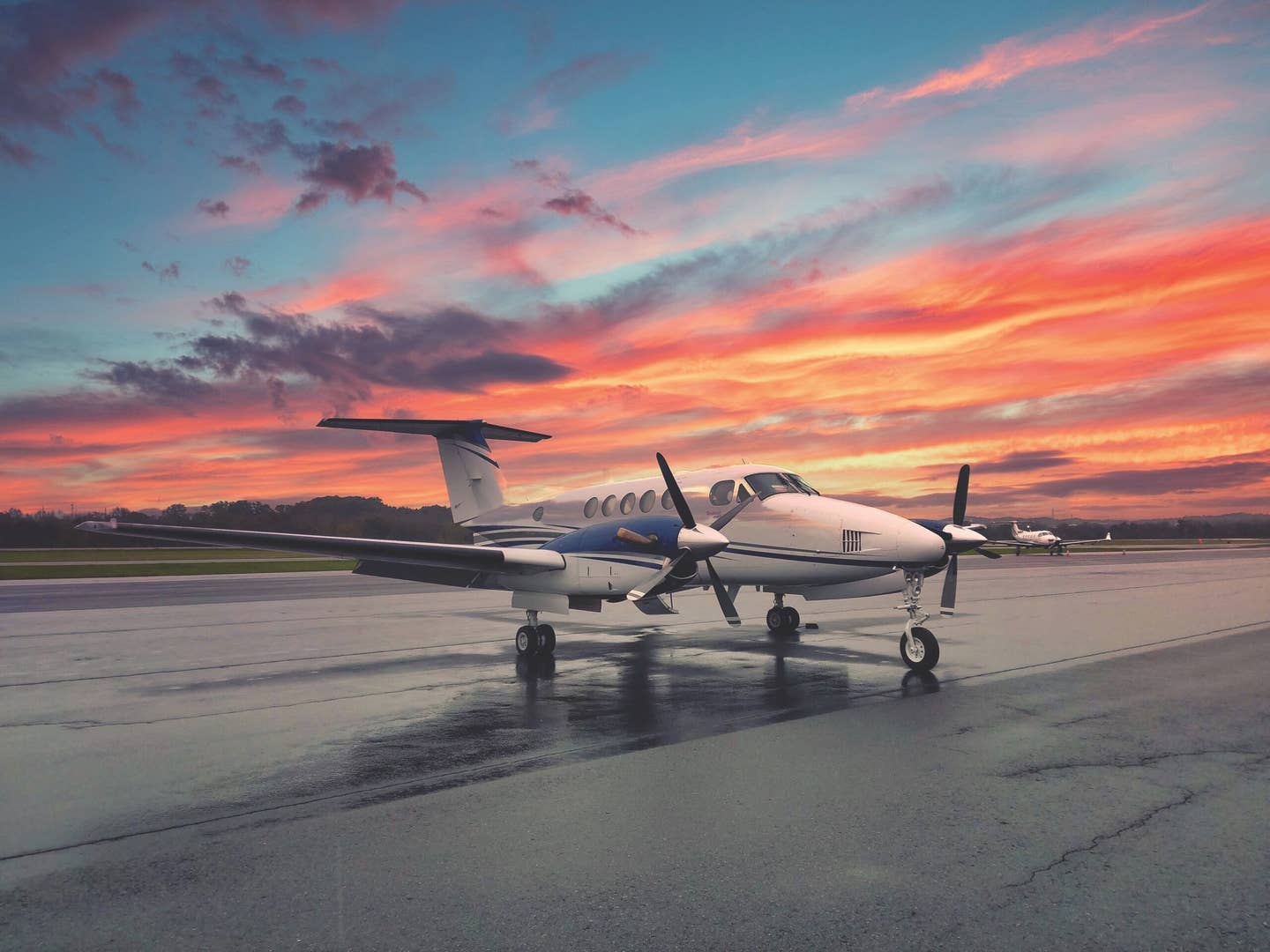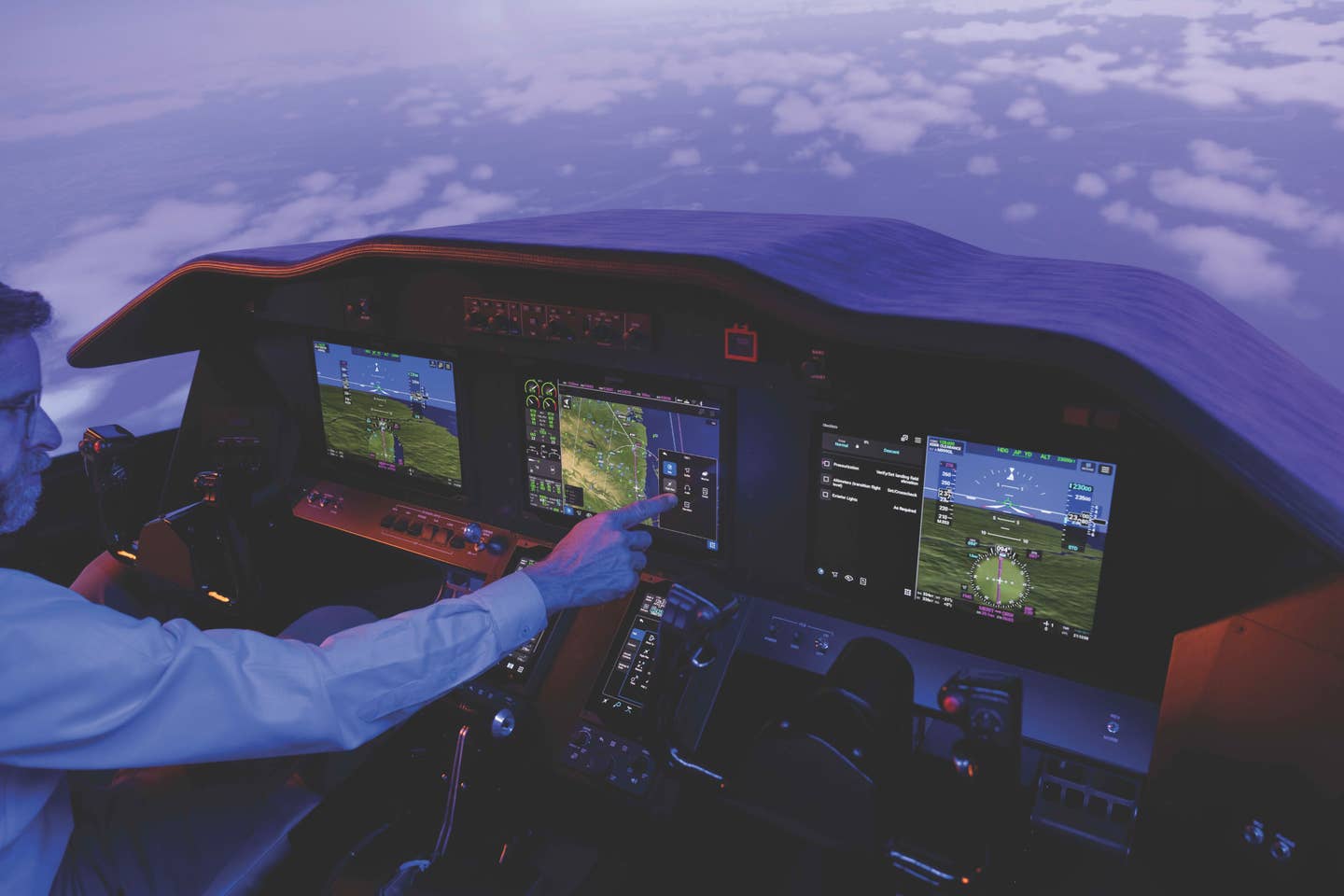
If we’d written this story a few decades ago, the list of weather resources for pilots would have been rather short — a flight service station briefing either in person or perhaps by phone, and the evening weather report on TV or the radio. Pilots thought they’d really made progress when the direct user access terminal system (DUATS) first appeared, allowing them to check weather from a personal computer. Smartphones and tablets, of course, didn’t even exist. Today, the array of preflight weather-briefing tools and apps to deliver the best of the U.S. government’s weather resources continue to evolve and come bundled with Garmin Pilot and ForeFlight. They are available over the SiriusXM satellite weather service and can be accessed through ADS-B ground stations with devices such as Sentry, Stratus and D3. On the Web, there’s WeatherSpork and Weathermeister, which are specific to aviation, in addition to scores of weather-related websites and apps for the masses. Of course, the days of visiting an FSS for an in-person explanation of the atmosphere passed into history years ago when the FAA handed weather briefings over to Lockheed Martin, now called Leidos. Many pilots say good riddance, but while the proliferation of tablets and smartphones can slice and dice weather around the clock, there’s more to understanding Mother Nature than simply looking at reams of data. In fact, a solid understanding of how the atmosphere normally functions is key to completing a practical pilot weather equation. The beauty of an in-person visit to an FSS was the wealth of knowledge briefers delivered on a one-to-one basis as they pulled up the latest prognostic charts or offered analysis of the data based on their regional knowledge. In the early days, it would be odd to find an FSS briefer who wasn’t a pilot. While pilots can still speak to a live briefer on the phone, much of the weather-data analysis is up to the pilot, whose basic flight training might have left them unprepared for the challenge.
A look at 1800wxbrief.com might seem like a step back toward the Stone Age, but the site offers an enormous amount of weather data at a great price: free. Pilots can create a personalized dashboard of preferences and see a host of current and adverse weather reports, prognostic charts, radar and satellite images and, of course, access to flight-plan-filing tools.
There’s also the telephone information briefing system (TIBS), available by calling 1-800-WXBRIEF. The TIBS recording delivers significant weather updates based on the caller’s location. TIBS recordings move along rather quickly, so be ready. A similar recording of weather updates, TWEB, is available while airborne on a variety of frequencies.
With more pilots equipping their aircraft to meet next year’s ADS-B Out mandate, the ADS-B In data stream that normally comes along with it offers access to quite a few weather resources through the free FIS-B service, a ground-based broadcast provided through the FAA’s ADS-B services network that works with already installed ADS-B ground stations when the aircraft is within range and via line of sight. FIS-B enables pilots of properly equipped aircraft to receive and display a suite of broadcast weather and aeronautical information products, some via text messages and others through graphics, most of which are also provided free of charge. Because ADS-B is transmitted from ground stations, you might not be able to receive weather data before takeoff.
Advisory Circular AC 00-63, “Use of Cockpit Displays of Digital Weather and Aeronautical Information,” contains detailed information about FIS-B meteorological products and also makes an excellent primer for pilots by detailing the terms used in most of the weather products.
FIS-B information can also be accessed through receivers such as the Sporty’s Stratus or the uAvionix Sentry, available through ForeFlight. Pilots, of course, need to understand their own system’s architecture, service environment, product life cycles, modes of operation, indications of system failure and data update intervals. For example, on FIS-B, convective sigmets are updated every 15 minutes, Nexrad every 10 minutes and pireps as they’re transmitted. This doesn’t consider the time it might take for a third-party provider to send the data. The key is realizing that none of the FIS-B weather information you receive in the air is real-time. Delays mean never, ever attempting to use uplinked weather data for precise thunderstorm avoidance or penetration.
Receivers
The least expensive hardware to bring ADS-B data to the cockpit is the portable Scout unit available through ForeFlight and created by uAvionix. The Scout measures just 3.4 inches tall and less than an inch wide while tipping the scale at just 17 grams. It requires an external battery for power and uses a suction cup to attach it to an inside aircraft window. With Scout, pilots can see the subscription-free FIS-B weather and some traffic information on ForeFlight.
Another ForeFlight receiver option is the portable Sentry, which adds a backup attitude indicator visible on ForeFlight. The Sentry is powered by its own internal 12-hour battery. Sentry comes with a high-capacity storage card for replay or storage of weather data and includes a built-in carbon monoxide detector and alarm. Like the Scout, the Sentry attaches to an inside window with a suction cup. The unit retails for $499.
Another popular receiver option is any of the Stratus units, made by Appareo and sold by Sporty’s Pilot Shop, such as the Stratus 1S or 2S at $449 and $899, respectively. The Stratus 1S, using an internal battery and antenna, brings FIS-B data to an iPad using single-band ADS-B. Stratus 1 includes WAAS GPS, but no backup attitude system. The Stratus 2S includes dual-band ADS-B, a built-in WAAS GPS, a cool replay feature, a flight-data recorder, a pressure altitude sensor and an AHRS to provide a backup attitude indicator. The Stratus 2S AHRS aligns itself, so synthetic-vision subscribers will see attitude information displayed on top of terrain. The Stratus 2S is not, however, certified to be used as a primary attitude reference.
New to the lineup is the Stratus 3, with an introductory price of $699. It features auto shutoff as well as smart Wi-Fi that also allows the iPad to gather data on the ground through the Stratus Wi-Fi link. Stratus 3 and most all other units will soon also take advantage of new FAA weather products, such as thunderstorm echo tops, lightning-strike information, and icing and turbulence forecasts, when they become available later in 2018. Stratus 3 works with a number of other apps, such as FltPlan Go, and some Android systems.
SiriusXM is an alternative to the free ADS-B weather that is transmitted via satellite, making it available anywhere in the United States even while the aircraft is sitting on the ground. Access to Sirius requires a monthly subscription ranging from $29.99 to $99.99 depending upon the options chosen. Flying with ForeFlight on an iPad requires at least the $39.99 package. Sirius weather includes U.S. and Canadian radar, cloud-to-cloud and cloud-to-ground lightning, TAFs and metars, graphical winds and temperatures aloft. More expensive packages include forecasts and weather observations, high-resolution graphical forecast winds, map with surface features and isobars, visibility, freezing levels, six levels of graphical turbulence and an icing “nowcast.”
Of course, SiriusXM requires satellite-capable receivers and antennas. Either Garmin’s GDL 51 or 52 will work just fine. The GDL 52 offers both Sirius and ADS-B reception in one unit, not to mention that Sirius brings more than 150 channels of SiriusXM entertainment radio to the cockpit. The $399 Garmin SXAR1 also brings SiriusXM music and weather while adding WAAS GPS functionality.
Dynon just released the DRX, a portable, dual-band ADS-B traffic and weather receiver that operates for days on an internal battery. The DRX supports connectivity with most mobile apps, including ForeFlight and FlyQ, allowing pilots to see the traffic picture with dual-band ADS-B reception to bring ADS-B weather products like Nexrad radar, metars and TAFs. DRX provides WAAS GPS and lists for $395.
On the Web
A number of specialized websites offer a range of weather resources. WeatherSpork co-founder Scott Dennstaedt says, “Our primary goal is to simplify the preflight weather analysis process and reduce the number of VFR-into-IMC accidents.” He pointed to WeatherSpork’s signature feature, the Wheels Up Departure Advisor, which “collects weather and user-defined route inputs and lets pilots look as far ahead as three days for the most opportune departure time.”
That decision is aided by colored dots at each weather reporting point that identify VFR, marginal VFR, IFR and low-IFR weather. By dragging the time selector at the bottom of the screen, users can watch how forecast weather is expected to evolve. “We really believe this is a revolutionary product and will forever shape how pilots do preflight weather analysis,” Dennstaedt added.
WeatherSpork is a companion app to Dennstaedt’s earlier weather-training venture, AvWxWorkshops.com. Subscribe to WeatherSpork — the Elite membership costs $79 annually — and pilots gain access to most of the weather training videos as part of the deal. The WeatherSpork app runs on both Android and Apple devices, or users can access the system from within an internet browser. Additional weather education is spread through a monthly newsletter called SporkNews, as well as the company blog, the Spork Report.
MyRadar’s app comes in a free and a pro version. The pro costs $2.99 and rips out the advertising messages. MyRadar is similar to the Weather Channel app, with local weather, an hourly forecast and a five-day forecast as well. MyRadar, however, opens to an animated local radar display, something not all that easy to access on the Weather Channel’s app. Depending upon the user-chosen overlays, you easily see the atmosphere in action. On the day I downloaded the app, a front happened to be passing through Chicago, so along with the radar returns, the animated winds aloft made it a snap to figure out where the front was located by where the winds began swinging out of the northwest. MyRadar also includes aviation specific overlays and a handy graphical wind readout.
My local flying club members swear by Weathermeister. The basic system is free, but with a basic subscription of $4.95 per month or the premium at $6.95 per month, the advertising’s gone. The premium option delivers TFR notifications as well as weather by email should the user choose.
While much of Weathermeister is text-table based, it improves weather briefings and go/no-go decisions by adding color against a black background to make the important elements of a metar stand out. Red or orange text means IFR weather along the route. Winds in blue translates to gusty conditions. Weathermeister also offers metar and TAF decoding, winds-aloft decoding, individualized performance profiles and a flight optimizer that identifies the most efficient altitude for a given route at the ETD.
In one example, the system showed and analyzed metars for a 100-mile radius of a test aircraft’s home base at Malmstrom Air Force Base in Great Falls, Montana. A metar for KCTB, Cut Bank, Montana, read like this on Weathermeister: “KCTB 10:43 am LIFR ¼ sm snow, fog, scattered 500 feet, scattered 800 feet 310 at 28 gusting to 39.” Clearly the field was IFR and local winds were pretty strong. More important, in the space of what a normally decoded metar uses, Weathermeister analyzed seven other stations, making comparisons a snap.
I opened the mobile Web version and added a route, KPWK-KLOU, and within seconds had access to a VFR sectional with my route highlighted, as well as an elevation profile that showed nothing higher along the way than 1,000 feet agl. The optimizer told me the fastest speed would be had at 3,500 feet, while best economy required a climb to 11,500 feet. Metars popped up for 25 miles either side of the route, as well as sigmets, a surface analysis chart, a radar mosaic, a couple of Geostationary Operational Environmental Satellite views, winds aloft, TAFs along the route, 12- and 24-hour prog charts and every notam I might need along the way. The fuel-price option also told me 100LL could be had for $3.60 a gallon in Lowell, Indiana, versus retail at PWK, where it’s listed at $6.24, or Bowman Field, where it’s sitting at $5.75. For $69.99 a year, Weathermeister’s not a bad deal, but users need to figure out the intricacies on their own because there’s no support.
Because the available weather resources seldom explain how to interpret the data, the FAA’s publication “General Aviation Pilot’s Guide to Preflight Weather Planning, Weather Self-Briefings and Weather Decision Making” should become the starting point for any pilot. It takes a great initial look inside the atmosphere for a new pilot and can act as a great refresher to more seasoned aviators. Other important resources include the FAA’s advisory circular AC 00-45H, Aviation Weather Services, as well as the NOAA Aviation Weather Center’s website aviationweather.gov.

Sign-up for newsletters & special offers!
Get the latest FLYING stories & special offers delivered directly to your inbox

